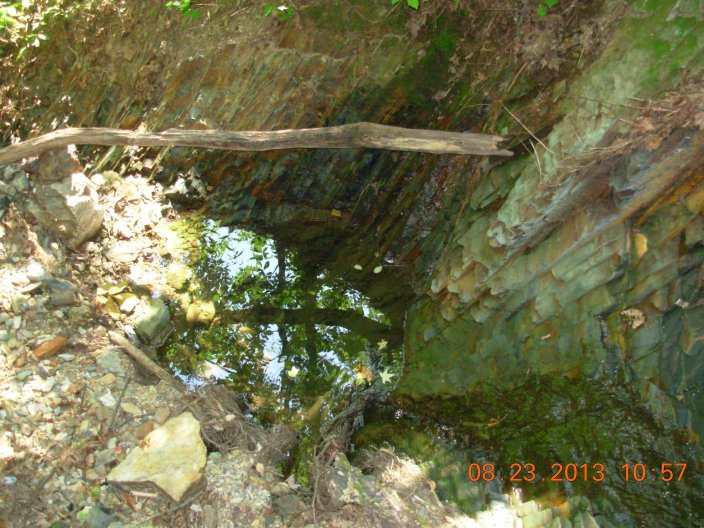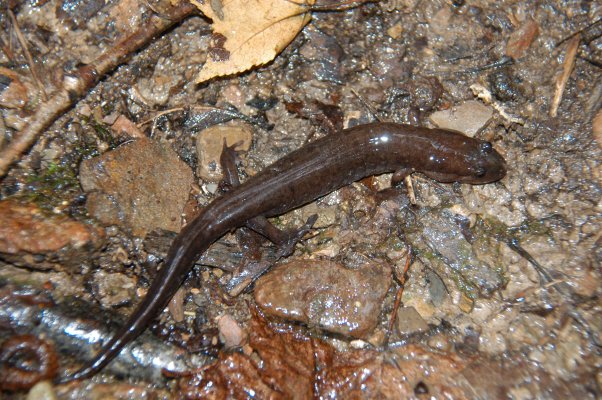The Ouachita Mountains Biological Station has served collegiate needs as a research and education center since 1962. OMBS is a 600 acre natural area located in the Ouachita Mountains of the Interior Highlands. Elevation ranges from approximately 369 to 622 m. The area is a mixed pine hardwood forest depending upon the degree and orientation of the slope. Dominant tree species include shortleaf pine, post oak, black oak, blackjack oak, southern red oak, and sweetgum with dogwood, downy serviceberry, American hornbeam, eastern hophornbeam, and winged elm in the understory. Within a fifty mile radius several endemic species of salamanders may be found.
OMBS Location: 3.9m (6.5 km) Southwest of Big Fork, Polk County Arkansas
Directions
OMBS downloadable Station brochure
OMBS downloadable Facilities slide show
Click here to view our OMBS Calendar
OMBS Map
Hurbert Hervey at Cains Landing Bossier Parish, LA.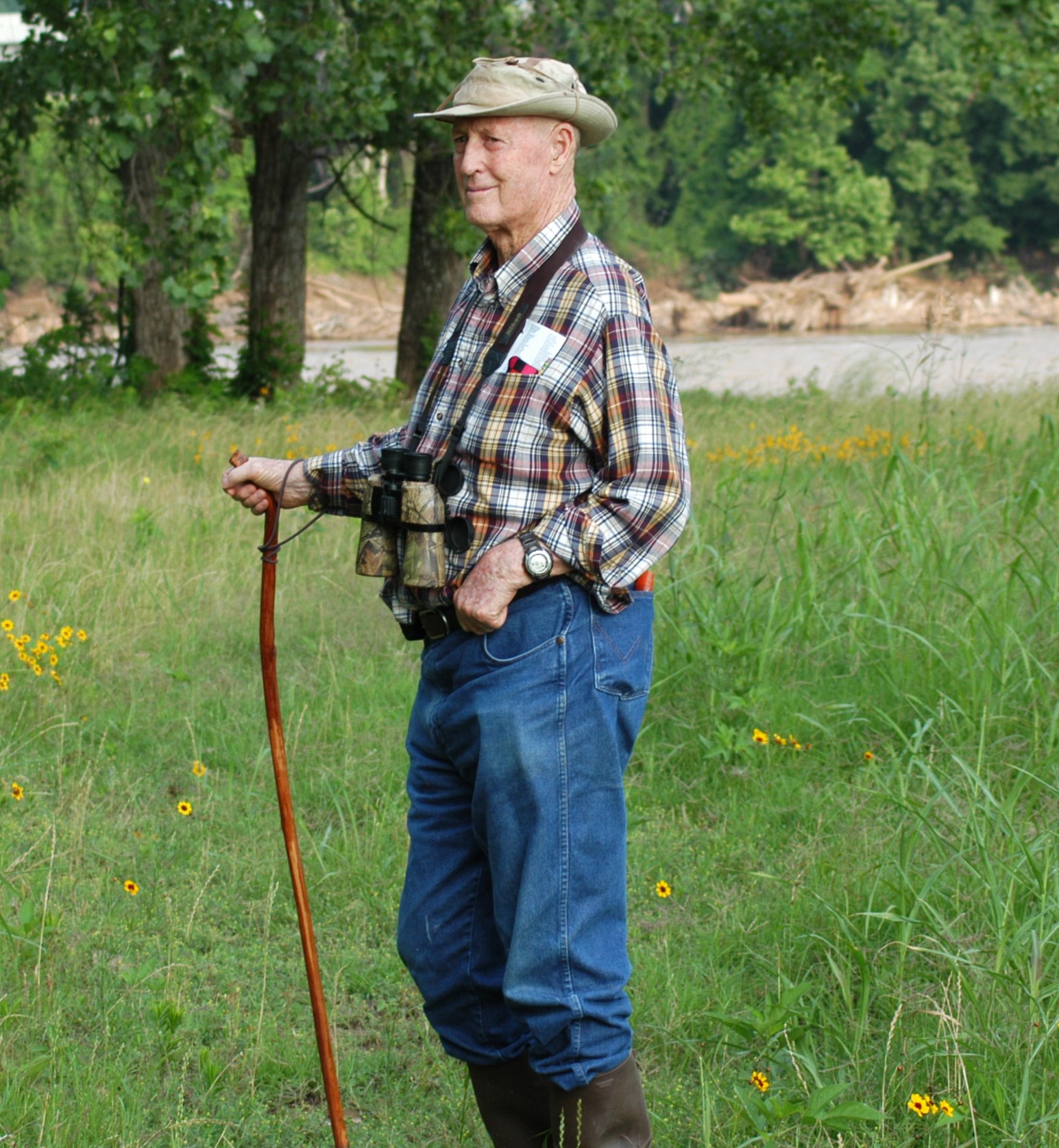
In Memoriam: Hubert Calvin Hervey, Jr.
Longtime OMBS Advisory Board member Hubert Hervey (age 88) passed away in November 2023 after finally succumbing to his third courageous battle with leukemia. Hubert was born in Dallas, Texas, but lived most of his life in DeSoto Parish, Louisiana, and spent his adult life as a dairy farmer there. He proudly served his country in the United States Army.
Hubert received a bachelor’s degree in agriculture (dairy science) from LSU Baton Rouge. He was proud of the time he spent at LSU volunteering to help record data during Dr. George Lowery’s classic nocturnal bird migration studies. Hubert loved nature and birding was his passion. He spent as much time as he could studying birds and turned up several unusual species on his dairy farm over the years. He served in an integral advisory capacity related to OMBS management and planning and he loved visiting the Station and adding birds to the OMBS checklist. Hubert’s input was particularly valuable in relation to the Wallace Lake Biological Station. He was intimately familiar with DeSoto Parish and the Wallace Lake area.
He is best known to Louisiana birders for his dedication to studying the interior Least Tern on the Red River. He made annual excursions on the Red River with the Corps of Engineers and Fish and Wildlife Service to inventory the number of adult and juvenile terns, as well as nests and eggs, if present on sand bars. He published the results of his study entitled “Nesting Success of Least Terns on the Red River of Louisiana” in the Journal of Louisiana Ornithology 5(1) Summer 2001. His annual trips down the Red River continued for decades after his study was published and he reported his inventory results of the Least Tern to the Shreveport Bird Study Group every year. Hubert presented his results to the Arkansas Academy of Sciences as well.
Hubert was predeceased by his first wife Betty Jean Hervey, son Stephen Hervey, and second wife Patricia Hervey, who joined him on many of his birding excursions later in life. He is survived by his son David, two grandchildren, a stepdaughter, three stepsons, and several step-grandchildren, as well as two brothers and their families. Hubert loved his family and his friends and will be sorely missed by all who knew him. The OMBS mourns his loss but will continue to benefit from his valuable contributions over the years.
Orchids at the OMBS
One of three orchids found at the OMBS, Cranefly Orchid, Tipularia discolor, in flower.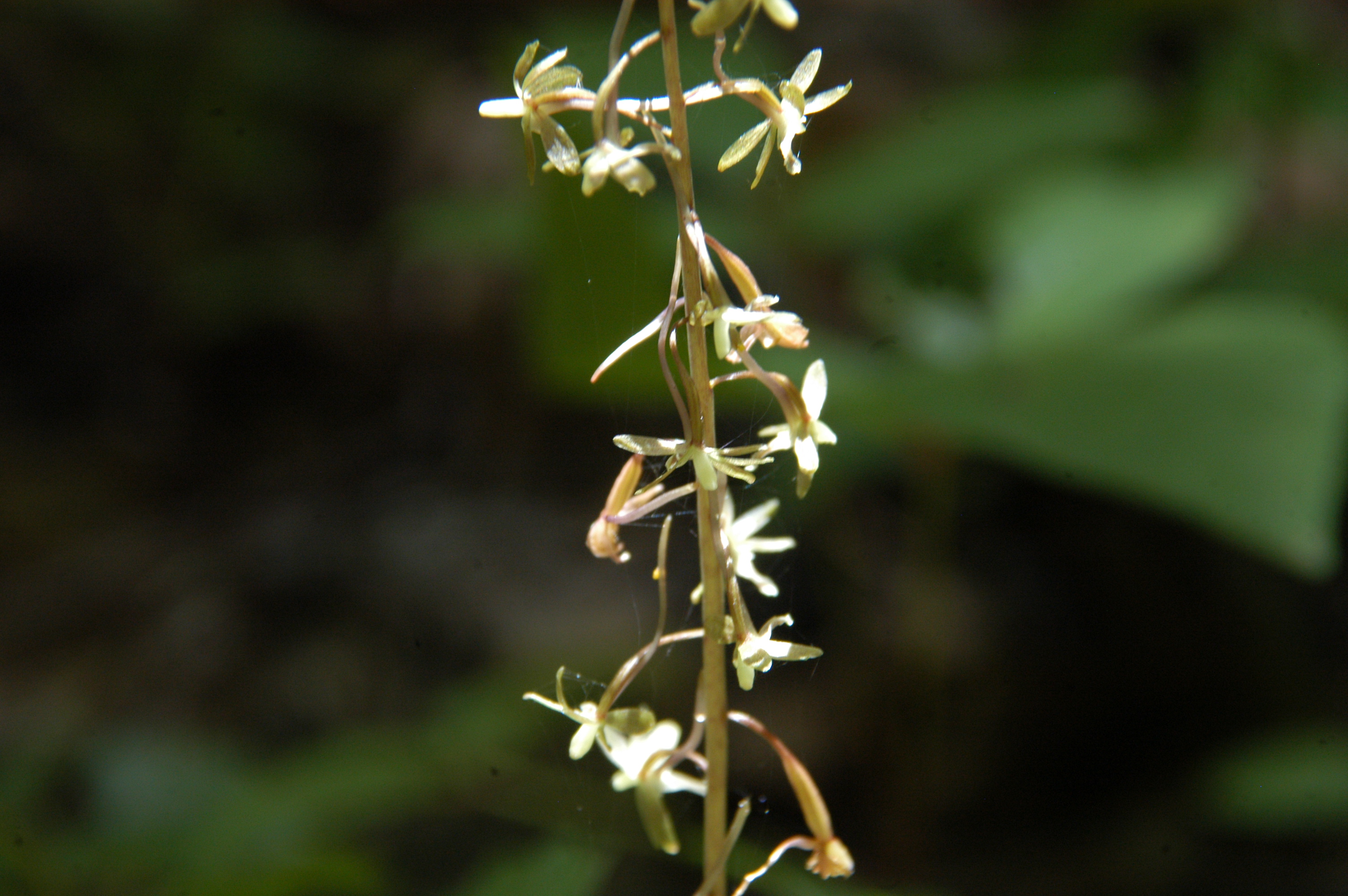
Cranefly Orchid Leaf, Tipularia discolor. 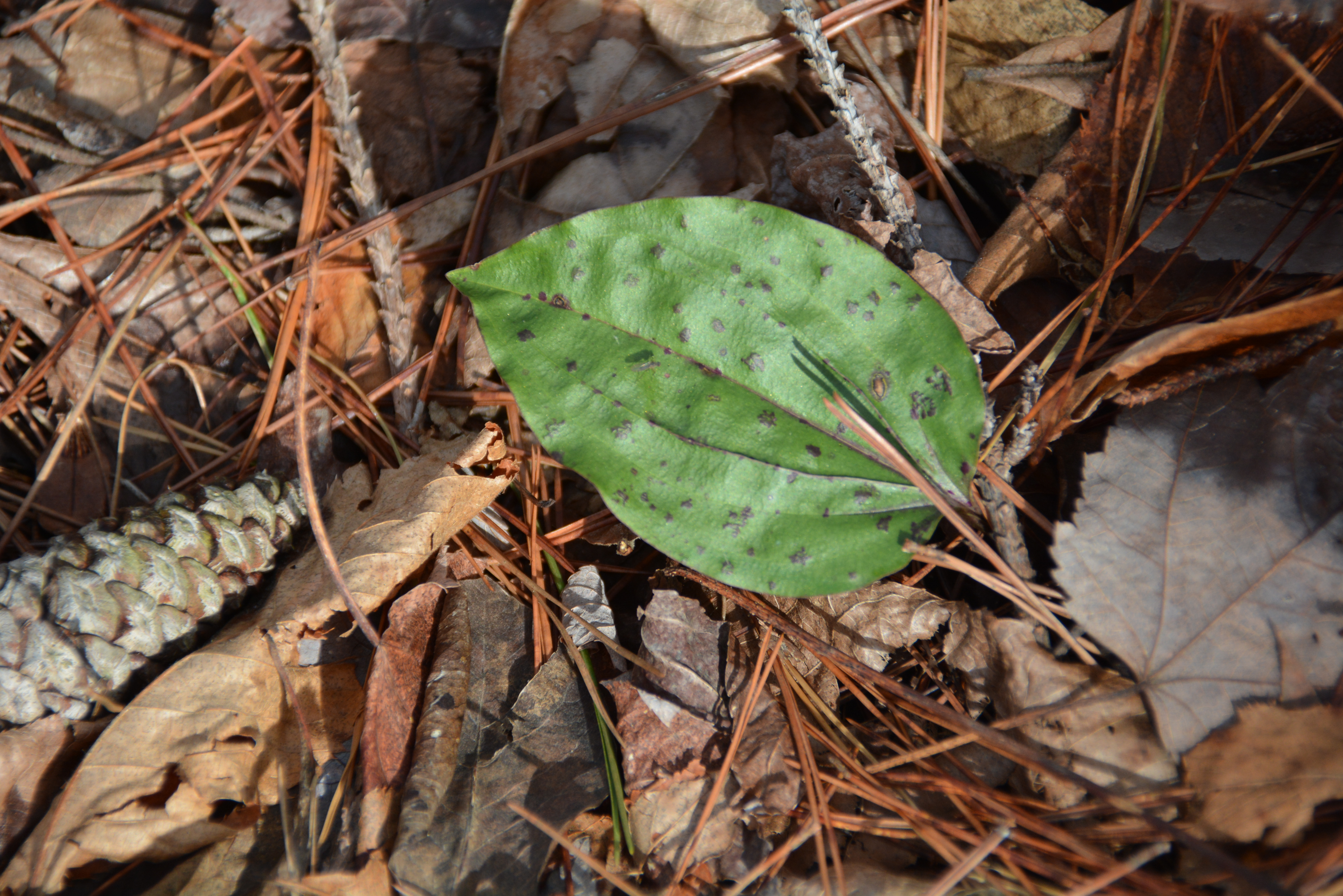
The family Orchidaceae is one of the two largest families of flowering plants with more than 20,000 named species. Only Asteraceae has more taxa. The majority of orchid species are perennial epiphytes that live in the tropics. Over 200 species live in North America with more than 30 species of orchid recorded in Arkansas, but I am only aware of three species that have been reported from the OMBS. In their preliminary survey of the vascular flora of the OMBS, MacRoberts, MacRoberts, and Marsico listed two species, Spiranthes tuberosa and Tipularia discolor. Since their 2005 preliminary survey, one species, Goodyear pubescens, was added in 2014.
On a recent visit to the OMBS, Park Manager Dr. Jeff Pittman and I noted the Cranefly Orchid, Tipularia discolor, in flower. This orchid appears to be widely distributed in the OMBS and is easy to spot from September to spring because of its oval green leaf with dark purple spots on top and purple color underneath. The leaves are frequently observed on and along trails from early fall to late spring. The orchid blooms from mid-July to late August, after the leaf has disappeared. The 15 to 20-inch flowering stems are not as easily spotted as the leaves and are attractive when observed up close. Tipularia is reportedly pollinated by noctuid moths.
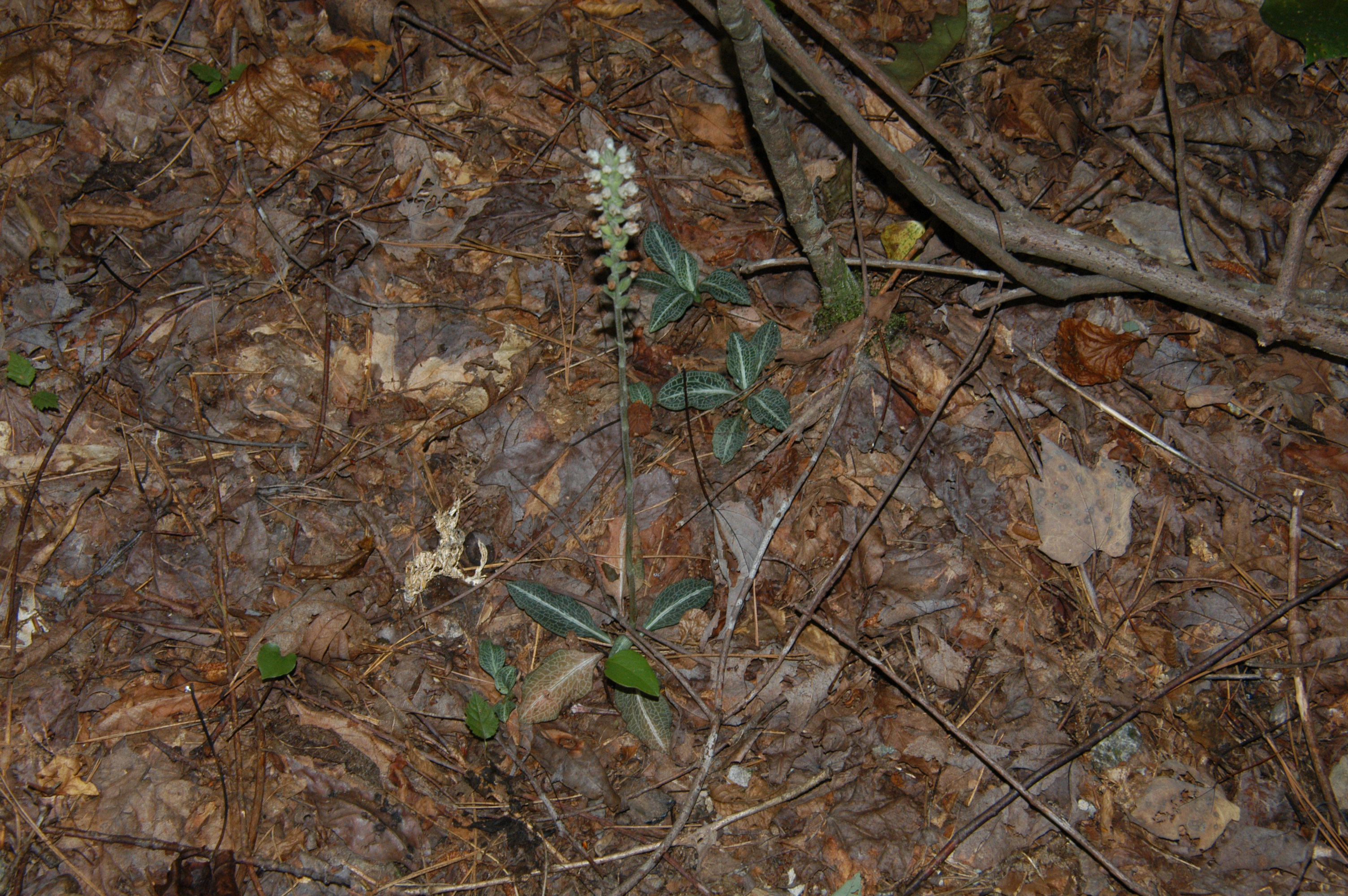
The Downy Rattlesnake Plantain, Goodyera pubescens.
The Downy Rattlesnake Plantain, Goodyera pubescens, also blooms in summer, from July to early September. I photographed it on the Station in late August 2014. I expect several additional species of orchid occur on the Station and encourage researchers to be on the look-out for them. If you have hard evidence of additional species from the OMBS, please let me know.
Larry R. Raymond, Co-director, lrraymond@aol.com, 318-347-3134
Research Needed
There are many interesting biological research projects that can be done on the OMBS. The following list contains a few examples of projects, any of which could lead to a publication in a scientific journal. There are many more.
Compare the ecology of two species of walking stick insects, diversity of ants, feeding habits of trapdoor spiders, nesting biology of Louisiana Waterthrush, population ecology of buckeyes, population density of the trapdoor spider Ummidia, winter ecology of flying squirrels, species diversity of moths, winter bird community structure, chipmunk ecology, earthworm diversity, phosphorescent invertebrates, mushroom diversity and abundance, lichen diversity, population ecology of the snake genus Virginia, tree species used for food by Yellow-bellied Sapsuckers, fish diversity in the creeks, population structure of freshwater mussels, where do Eurycea overwinter, habitat of Hemidactylium, community structure of daddy longlegs, biotic community using hollow trees, population structure of three species of the spider genus Micrathena, gastropods of the Ouachitas, population biology of scorpions, biology of Cerulean Warblers, habitat characteristics of mountain populations of salamanders, diversity of centipedes, grasshopper diversity, dirversity of beetles, ecology of stoneflies, seasonal abundance of bats, comparative rabbit ecology, demography of fence lizards, home range of timber rattlesnakes, rodent diversity, seasonal abundance of fireflies, habitat characteristics and diversity of deer mice (Peromyscus), breeding bird diversity, demography of paper wasps in the forest, habitat of the shrew, Cryptotis parva, diversity of millipedes, population dynamics of moles, diversity of butterflies, the community of hole-nesters, habitat of the Golden Mouse, community ecology of snakes of the genus Storeria, pseudoscorpions of the Ouachitas, diversity of the Homoptera, diversity of terrestrial snails, distribution of American Basswood, demography of Ambystoma maculatum, ecology of tarantulas, abundance of Eastern Screech-Owls, community composition of oak trees (Quercus), diversity of jumping spiders(Salticidae), diversity of slime molds, population dynamics of flying squirrels, diversity of tardigrades, competition among woodpeckers, and many more.
If you are interested in bringing a class or other group, check our calendar for overnight availability; we have a total of 19 beds available, not counting camping or tents.
The OMBS Biota Project
The OMBS Biodiversity Project is being updated frequently now. Those of you who
have visited the OMBS in the past and have made voucher collections would you check
the biodiversity page and add any species that you can. Please e-mail me the species
name and museum number of a voucher specimen. Thanks for your help.
Everyone can help with the OMBS Biota Project. Check the status of the biotic checklists of the OMBS.
Research and Education
The station serves collegiate groups, graduate students, faculty, and researchers for any aspect of field research. The station is available at any time during the year by reservation. Check out our Research Notebook.
